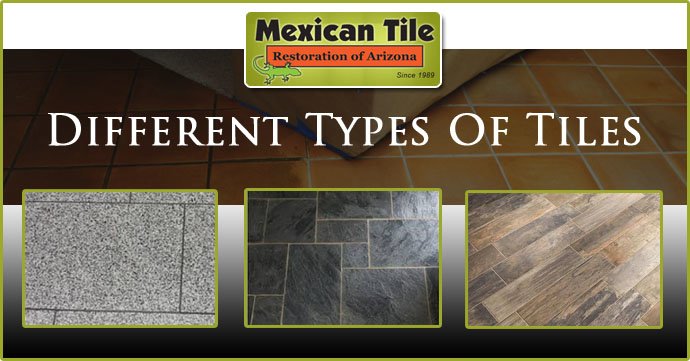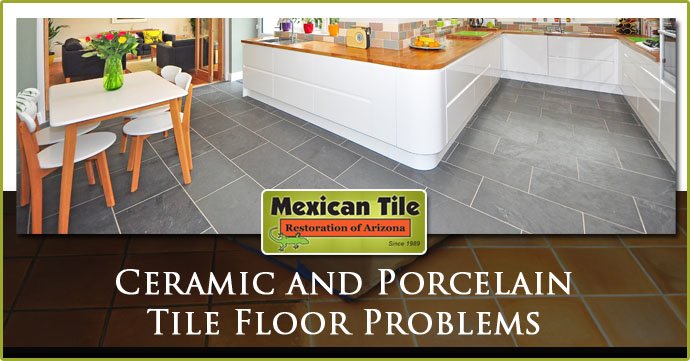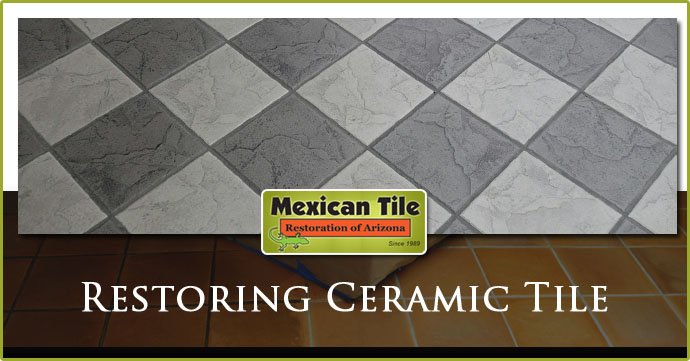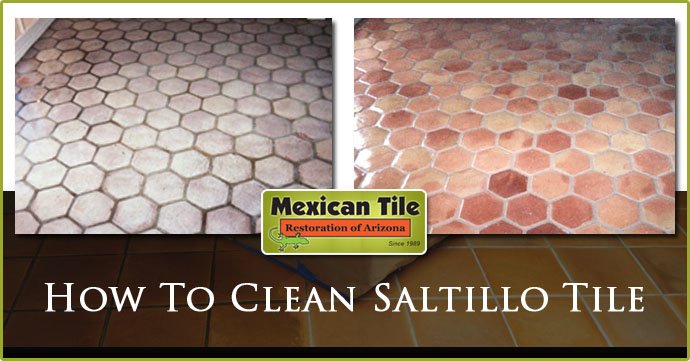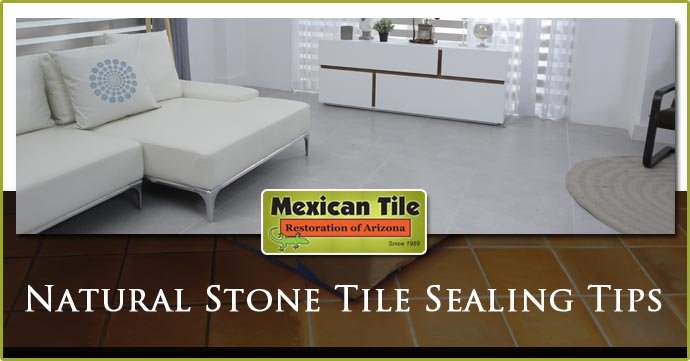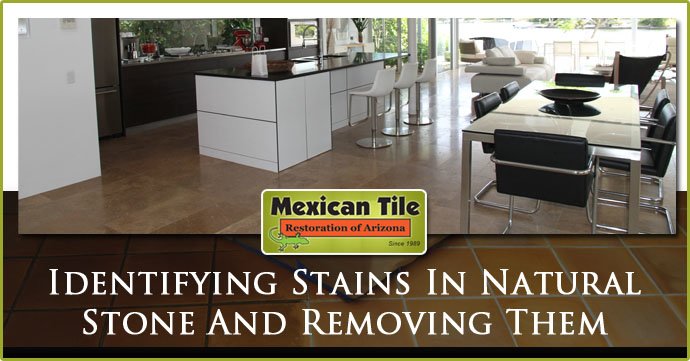If you’re installing new tile, or you are having old tile cleaned you need to know what kind of tile you have. There are different types of tiles that are available to install. If you are looking for tile & grout cleaning our tile cleaning professionals will be able to identify what kind of tile floor you have, and know the right cleaning method to use.
Types Of Tile Flooring
There is a wide variety of materials, styles, and colors of tile. Each are made from different raw elements and have pros and cons. See below for a list of tile flooring types and see photos of each type of tile flooring.
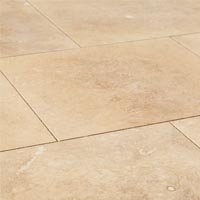 TRAVERTINE
TRAVERTINE
Travertine, a form of limestone, comes from the byproducts created by hot springs around the world. During the process of formation, minerals within travertine are combined, providing a unique pattern, character, and collection. When a unique and one-of-a-kind floor pattern is desired, travertine delivers.
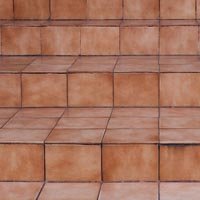 CERAMIC
CERAMIC
A ceramic tile is fabricated using a process of cooling and heating natural minerals and clay. The desired texture and appearance can be achieved as ceramic floor tiles are available in a large range of sizes, colors, textures, finishes and shapes from Mexican Tile.
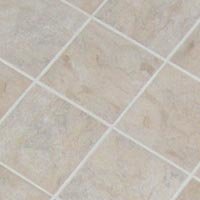 PORCELAIN
PORCELAIN
Porcelain tiles are fabricated using natural clay. The porcelain tiles are made applying heat to refined clay, which produces a denser floor tile due to the higher temperatures. A floor tile with high-density can be used for indoor or outdoor projects. Porcelain tiles are also available in a range of colors, textures, and sizes to create the best fit for any style.
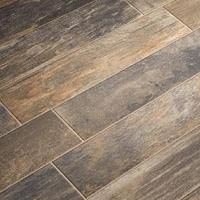 WOOD LOOK
WOOD LOOK
Rather than a material type, this is more of a tile category as tiles are fabricated using porcelain or ceramic, but mimics the appearance of wooden tiles. This provides the appearance and feeling of natural wood, but provides the easy cleaning and maintaining of ceramic or porcelain tile. It is also more durable than natural wood. We can make your wood look tile it your preferred style pattern.
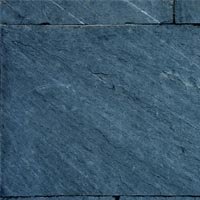 SLATE
SLATE
Slate tile comes from metamorphic rocks located throughout the world. Our collection of slate tiles provides a range of options, offering rich color palettes ranging from navy to sage, copper to red, and tan to black. Slate is a fine grained tile which is able to be used outdoor or indoor.
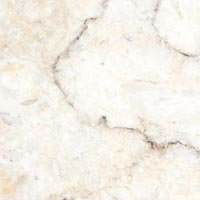 MARBLE
MARBLE
Marble tiles are created from an extremely durable stone, marble. Marble stone is available in nearly any color because of the variability of minerals. In addition, marble tiles can come with various types of finishes, including honed, polished, tumbled, or brushed. This a classic floor tile available for any room in the home.
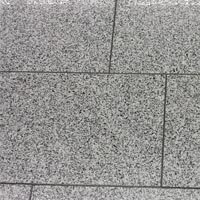 GRANITE
GRANITE
Granite is a type of igneous rock which developed by cooling magma or lava solidifying. A granite floor tile is distinguishable due to the smaller flecks on the surface, but it can vary in color richness, and visual depths that make every stone naturally unique.
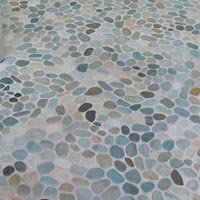 STONES & PEBBLES
STONES & PEBBLES
Stone and Pebble Mosaic tiles provide a beautiful and natural look to outdoor areas. Each of the unique shapes and natural tones are able to provide character to floors, showers, or any other room. You will have a one-of-a-kind pattern, becoming the newest focal point of the area.
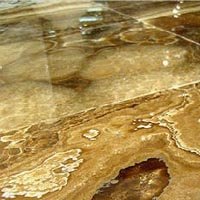 ONYX
ONYX
Onyx is a soft stone that offers transparency unlike any other natural stone. Onyx tiles are best used for counter tops, indoor flooring, and areas with light to medium traffic. This type of tile provides a smooth texture, with earth tones that will help the area stand out.
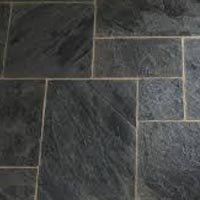 QUARTZITE
QUARTZITE
Quartzite is another type of metamorphic rock that provides a natural, but beautiful look. There are various textures and colors available. It has extreme durability and very versatile, it’s suitable for residential and commercial applications, and even used outdoors as well as indoors.
Phoenix Tile Cleaning
With a wide variety of types of tile knowing how to care for every floor type is the job of a tile cleaning company. In Phoenix businesses and homeowners trust the professional tile & grout cleaning of Mexican Tile Restoration. Different types of tile are more or less porous and need to be stripped, cleaned, and sealed the right way. To learn more about how we can help you clean your tile floors in Phoenix, Arizona give us a call today!
Phoenix Tile Cleaning Done Right
Mexican Tile Restoration – 602-370-6082
